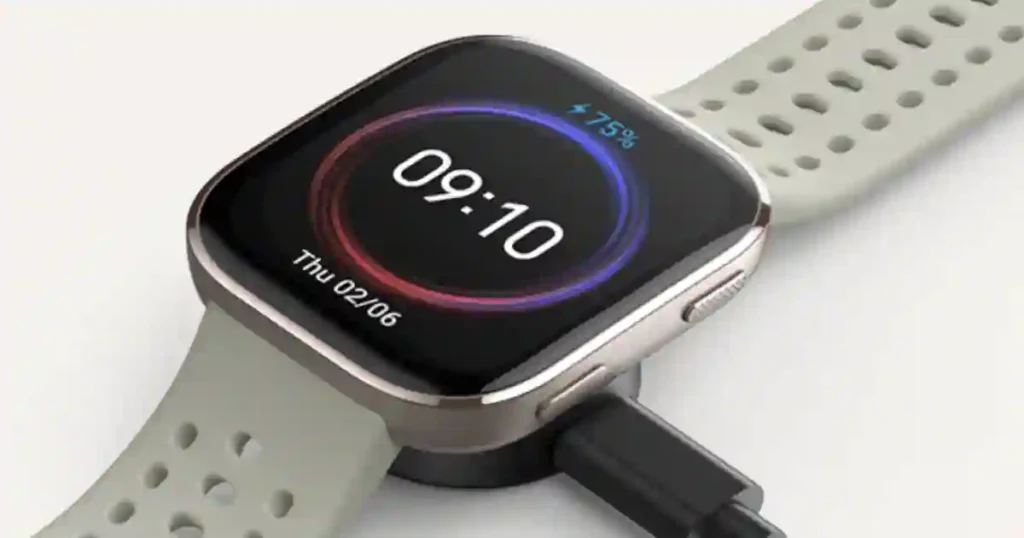Let’s be honest — the battery life on Amazfit watches is already pretty impressive. But if your GTR, GTS, or Bip is suddenly needing a charge sooner than usual, you’re not imagining it. More features, more notifications, and more sensors running all the time can drain your battery without you realizing it.
And sure, turning off the Always-On Display (AOD) helps — but you probably already knew that. What about the other settings that quietly drain your watch over time?
After using multiple Amazfit models and helping friends troubleshoot the same issue, I’ve compiled a simple guide: 5 clever tweaks that go beyond AOD and make a noticeable difference.
Top 5 Amazfit Smartwatch Settings to Boost Battery Life
1. Trim Down App Notifications
Let’s start with the most common culprit: nonstop notifications.
Every buzz, ping, or light-up moment costs battery, even more so if you’re getting alerts from 10+ apps you barely check.
Here’s what to do:
- Open the Zepp app on your phone
- Go to Profile → Your Watch → App Alerts
- Keep only what you truly need: calls, messages, maybe a fitness app
- Turn off the rest (Instagram DMs can wait!)
Pro tip: Trimming your notifications down to the essentials not only saves battery, but it also makes your day less chaotic.
2. Use Smarter GPS Settings
Using GPS for walks or runs? Great! Leaving it on high-accuracy mode all the time? Not so great for battery.
What helps:
- Switch to Power Saving mode
- Turn off auto workout detection if you don’t need it
- Use connected GPS (phone-assisted) if ultra-accuracy isn’t crucial
I’ve tested this on the GTS 4 Mini and GTR 3 — switching GPS mode alone gave me an extra 2–3 days of use.
3. Dial Down Display Settings
Your screen is beautiful, bright… and hungry. It consumes more battery than you might think, mainly if it stays on for too long or too often.
What you can do:
- Set screen brightness to 40–60% (plenty bright for indoors)
- Change the screen timeout to 5 or 10 seconds
- Turn off Lift-to-Wake if you rarely use it
This one’s quick and easy, but surprisingly effective—lower brightness = longer life.
4. Tweak Health Monitoring Frequency
I love health data — heart rate, sleep, SpO₂, stress… all of it. But if your watch checks every 5 seconds, that adds up.
Try this instead:
- In the Zepp app, go to Health Monitoring
- Set heart rate tracking to every 10 or 30 minutes
- Turn off all-day SpO₂ unless you need it
- Disable stress monitoring if you don’t use that info
Don’t worry — sleep tracking still works fine. You’ll gain only a few days of battery life.
5. Use Battery Saver Mode (When You Need It)
Battery Saver Mode isn’t just for emergencies. This is perfect for travel, rest days, or anytime you need the basics.
What it keeps:
- Time, steps, and basic notifications
- What it pauses:
- Advanced tracking, heart rate updates, screen wake-ups, etc.
You can turn it on by swiping down on your watch or through the battery settings. It’s like Airplane Mode for your wrist — simple and effective.
Final Thoughts: Small Changes = Big Results
The Amazfit watches are well known for their long-lasting battery life. Still, a few smart changes can extend their lifespan even further, without compromising the features that make your watch helpful.
In my testing, I’ve reduced the charging frequency from every 6 days to every 9–10 days simply by adjusting these five settings.
🔁 Quick Recap
Here’s a cheat sheet for quick wins:
- ✅ Turn off non-essential app alerts
- ✅ Use balanced or power-saving GPS
- ✅ Lower screen brightness & timeout
- ✅ Set heart rate checks to 10–30 mins
- ✅ Use Battery Saver when needed
Need Help or Want More Tips?
If you found this guide helpful, share it with a fellow Amazfit user! Do you have a question about your watch or need help resolving a battery drain issue? Drop a comment below — I’ve probably encountered the same problem, and I’m happy to help.
And if you want more real-world smartwatch guides (without the tech jargon), subscribe to SmartwatchSphere’s newsletter. We’ve got plenty more people-first tips on the way.
Also See:-

